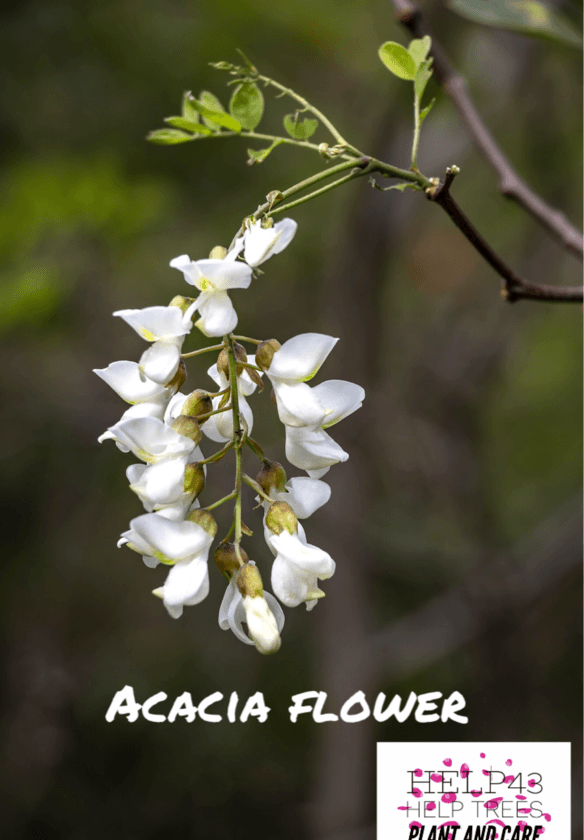The acacia tree – sacred wood
A Poem
The acacia tree
The sacred wood
Of the tabernacle
The soft wood
That hardens over time
There are around
980 species
All over the world
It belongs
to the Mimosoideae family
First found
In Australia and Africa
Its beautiful white flowers
Are sweet to eat
With divine fragrance
For now
The acacia fragrance
Has not been captured
It is imposible
Symbol of divine
Acacia Tree Overview
Acacia trees are a diverse group of trees and shrubs found in various parts of the world. In this article, we will explore the general characteristics of acacia trees, their ecology, and their importance to humans.
Acacia trees belong to the genus Acacia, which is part of the larger family Fabaceae. The genus Acacia contains over 1,000 species of trees, shrubs, and climbers, which are found in tropical and subtropical regions of the world, including Africa, Australia, Asia, and the Americas.
Most acacia trees are characterized by their distinctive compound leaves, which are made up of numerous small leaflets. The flowers of acacia trees are often small and inconspicuous, but they are typically highly fragrant and attractive to pollinators. The fruit of acacia trees is usually a legume, which is a type of seed pod that splits open when ripe to release the seeds.
Ecology of Acacia Trees
Acacia trees play an important role in many ecosystems. They are often pioneer species that colonize disturbed areas, such as clear-cut forests or burned landscapes. Acacia trees have a symbiotic relationship with certain species of bacteria that live in their roots, called rhizobia. These bacteria are able to convert nitrogen gas in the air into a form that the acacia tree can use for growth. This ability to fix nitrogen allows acacia trees to grow in nutrient-poor soils and to support other plant species in the ecosystem.
Acacia trees are also important habitat for a wide variety of animals. Many species of birds, mammals, and insects depend on acacia trees for food and shelter. For example, some species of antelope in Africa feed on the leaves and pods of acacia trees, while certain species of birds nest in the branches of acacia trees.
Importance of Acacia Trees to Humans
Acacia trees have been important to humans for thousands of years. Many cultures have used acacia wood for building, furniture, and tools. In addition, some species of acacia trees are used for food and medicine.
One well-known example is the gum arabic tree (Acacia senegal), which is native to Africa. The sap of this tree is used to produce gum arabic, which is used as a stabilizer and thickener in many processed foods, as well as in industrial products such as adhesives, inks, and paints.
Another example is the acacia tree species known as Acacia nilotica, which is native to Africa and the Indian subcontinent. Various parts of this tree are used in traditional medicine to treat a wide range of ailments, including diarrhea, fever, and toothache.

Acacia trees are an important group of plants with a wide range of ecological and cultural significance. They play a vital role in many ecosystems, providing habitat and food for numerous species of animals, and they have been used by humans for a variety of purposes for thousands of years. Whether you are interested in conservation, natural history, or human culture, there is much to appreciate and learn about the diverse and fascinating world of acacia trees.
Acacia in ancient scriptures
Acacia has a long and rich history in ancient scriptures and religious texts. In this article, we will explore the significance of acacia in various ancient scriptures and how it was used in religious rituals.
Acacia is mentioned in various ancient scriptures, including the Bible, the Quran, and the Egyptian Book of the Dead. In the Bible, acacia is described as the wood used to build the Ark of the Covenant, as well as the Tabernacle and its furnishings. In the Quran, acacia is mentioned as the tree that was burned to make the sacred ashes used in Islamic purification rituals.
In ancient Egyptian mythology, acacia was associated with the afterlife and was used in the mummification process. The Egyptian Book of the Dead describes how acacia was used to make the boat that carried the soul of the deceased to the afterlife. Acacia was also associated with Osiris, the god of the dead, and was believed to protect the dead in the afterlife.
Acacia in Religious Rituals
Acacia has been used in religious rituals for thousands of years. In many cultures, acacia was considered a sacred tree and was believed to have special powers. For example, in ancient Egypt, acacia was believed to have protective powers and was used in the mummification process to protect the dead in the afterlife.
In ancient Jewish tradition, acacia wood was used to build the Ark of the Covenant and the Tabernacle, which were both considered sacred objects. The wood was also used in the construction of the Temple in Jerusalem. In addition, acacia was burned as incense during religious ceremonies and was believed to have purifying powers.
In Islamic tradition, acacia wood is used to make the sacred ashes used in purification rituals. The wood is burned and the ashes are mixed with water to make a solution that is used to purify the body before prayer.
In many African and Native American cultures, acacia was used in spiritual and healing ceremonies. The bark, leaves, and roots of the tree were used to make medicine and were believed to have powerful healing properties. In addition, the tree was believed to have the power to ward off evil spirits and protect against disease.
Conclusion
Acacia has played a significant role in the religious and spiritual traditions of many cultures throughout history. The tree has been associated with the afterlife, purification, and healing, and has been used in a variety of religious rituals and ceremonies. The ancient scriptures and religious texts that mention acacia serve as a reminder of the important role that this tree has played in human culture and spirituality for thousands of years.
Thank you for likes, shares and comments! 🌳🌴🌲🌵
Source OpenAI’s chatGPT Language Models, Dalle, AI trot and Fleeky
images Picsart and MIB
Invest in your future
Take time to learn
Embark on your journey in affiliate marketing and website creation alongside an incredible community and myself. Invest in your future by dedicating time to learn and earn. Take all the time you need to master the basics before aiming higher. Give it a try and sign up for free. You won't regret it! Discover the possibilities for yourself...


